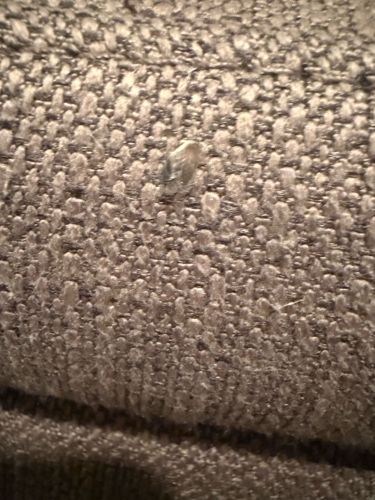Carpet Beetle (Larva)
Scientific Name: Dermestidae (family), possible Anthrenus or Trogoderma species
Order & Family: Order: Coleoptera, Family: Dermestidae
Size: Larvae typically range from 2 mm to 5 mm in length.

Natural Habitat
Carpet beetle larvae are typically found indoors, in homes, museums, and other buildings. They prefer dark, undisturbed areas, feeding on natural fibers, furs, wool, silk, feathers, dead insects, museum specimens, and pantry items. They can be found in carpets, rugs, upholstered furniture, clothing, attics, and neglected corners.
Diet & Feeding
Carpet beetle larvae are scavengers and detritivores. Their diet includes a wide range of organic materials of animal origin, such as wool, silk, fur, feathers, leather, animal carcasses (including dead insects), dried animal products, and sometimes plant-based materials like grains, cereals, and spices.
Behavior Patterns
The larvae are the destructive stage of the carpet beetle lifecycle, actively feeding and growing, often shedding their characteristic hairy skins multiple times. They are often found in dark, undisturbed areas where they feed on available organic matter. Adults are typically attracted to light and feed on pollen and nectar, and are often seen near windows.
Risks & Benefits
Potential Risks: Carpet beetle larvae can be significant household pests, causing damage to textiles, clothing, carpets, furs, and stored food products. While they do not bite humans, some people can develop allergic reactions or skin irritation from contact with their bristles. Potential Benefits: In natural environments, some species of dermestid beetles play a role as decomposers, helping to break down decaying organic matter. In forensic entomology, certain species can be used to estimate the time of death in criminal investigations by feeding on cadavers.
Identified on: 9/6/2025